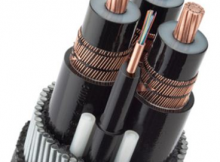Visible light communication (VLC) is a data communications medium which uses visible light between 400 and 800 THz (780–375 nm). VLC is a subset of optical wireless communications technologies.
The technology uses fluorescent lamps (ordinary lamps, not special communications devices) to transmit signals at 10 kbit/s, or LEDs for up to 500 Mbit/s. Low rate[vague] data transmissions at 1 and 2 kilometres (0.6 and 1.2 mi) were demonstrated.[1][2] RONJA achieves full Ethernet speed (10 Mbit/s) over the same distance thanks to larger optics and more powerful LEDs.
Specially designed electronic devices generally containing a photodiode receive signals from light sources,[1]although in some cases a cell phone camera or a digital camera will be sufficient.[3] The image sensor used in these devices is in fact an array of photodiodes (pixels) and in some applications its use may be preferred over a single photodiode. Such a sensor may provide either multi-channel communication (down to 1 pixel = 1 channel) or a spatial awareness of multiple light sources.[1]
VLC can be used as a communications medium for ubiquitous computing, because light-producing devices (such as indoor/outdoor lamps, TVs, traffic signs, commercial displays and car headlights/taillights[4]) are used everywhere.[3] Using visible light is also less dangerous for high-power applications because humans can perceive it and act to protect their eyes from damage.
